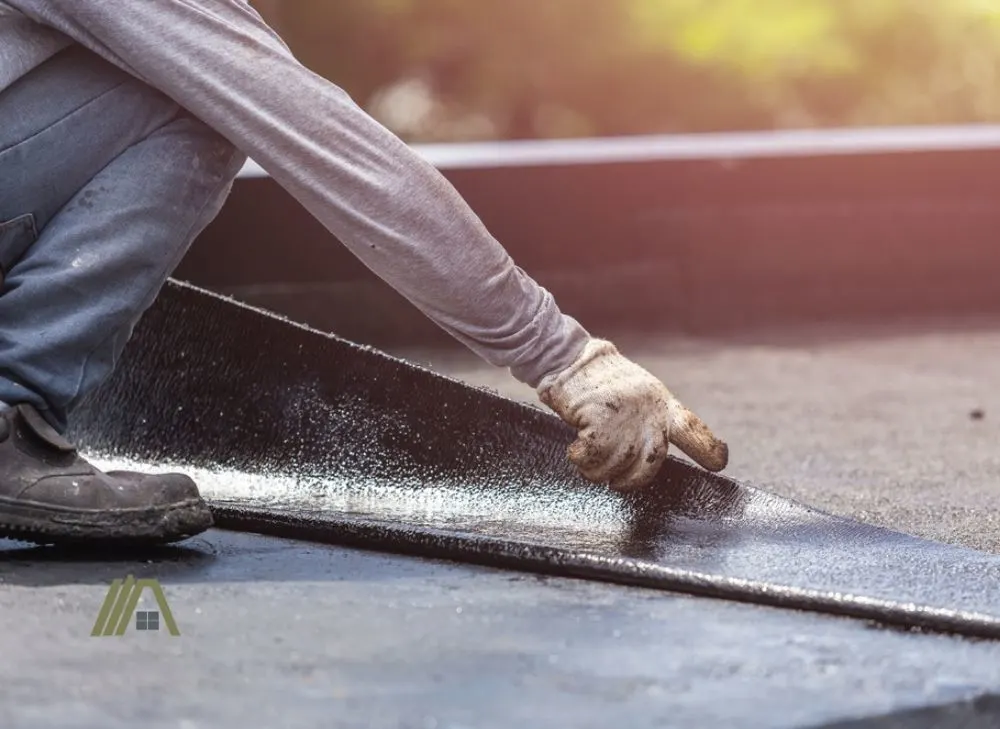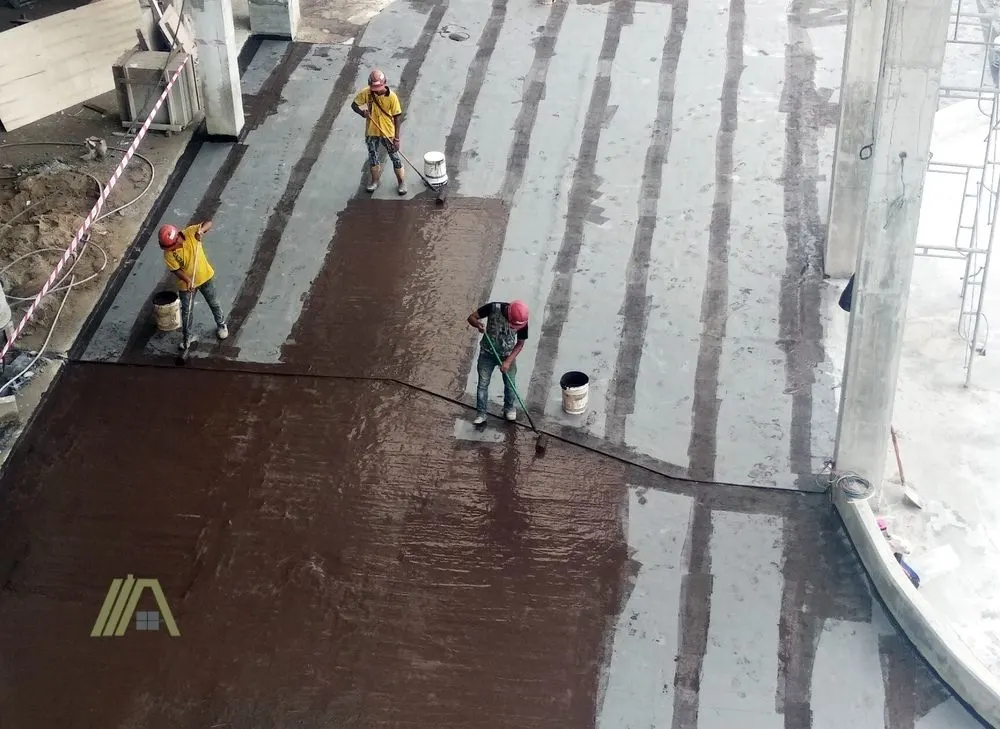Obviously, when you buy a waterproofing membrane, the instructions will tell you how long it will take to dry. However, when you have a time-sensitive project on the go, knowing before you buy the product can help you plan better. You may even choose the product based on the drying time.
Here at HVAC-Buzz, we understand the importance of informed decision-making and good planning. So, in the following article, we are going to look at the average drying time of two different types of waterproofing membrane (sheet and liquid) as well as the factors that might affect this drying time.

On average, liquid and sheet waterproofing membranes take 24 hours to dry. Sheets may take longer, but liquid membrane usually requires at least 2 coats with an average wait time between coats of 2 hours. Weather, location, surface, and required number of quotes affect the drying time.
Average Drying Time for Waterproofing Membrane
When you need to install waterproofing, you definitely want it to work. After all, uncontrolled movement of water is one of the home’s greatest enemies. Part of ensuring that it works is making sure to give it enough time to dry properly before tiling or painting over it.
Liquid Membrane
In many cases, multiple layers of liquid waterproofing membrane are required, so you have to consider the cumulative drying time with these products.

On average, one layer of liquid waterproofing membrane takes 2 hours to dry enough before the next layer can be applied. However, while it only takes a few hours for the liquid waterproofing membrane to get dry to the touch, it can take up to 24 hours for liquid waterproofing membranes to cure completely.
Each liquid waterproofing membrane drying time varies, so reading the instructions that come on the label of the product is crucial for accurate application, sealing, and curing times.
In terms of planning your time, you should know that the application of liquid membranes can also be more time-consuming to get the correct evenness of each coat.
There are some advantages of liquid waterproofing membranes, most notable is that they are more flexible and can be applied to many shapes and surfaces than sheet waterproofing membranes.
Redgard, a liquid waterproofing membrane, turns from pink to red as it dries, which can be a good indication of when it is ready for another coat or ready for the next step of the project.
Sheet Membrane
The drying time of sheet membranes range from 16 hours to 7 days. This is a wide range, so you will be happy to know that the average dry time is 24 hours. Very few will take up to a week to fully dry.

As you can see, the drying time of a sheet membrane can be a little longer than liquid waterproofing membranes.
However, one key difference between sheet waterproofing membranes and liquid waterproofing membranes is that a sheet waterproofing membrane only has to cure once, rather than in between each layer of a liquid waterproofing membrane.
By applying the sheet waterproofing membrane uniformly, users can guarantee a tight seal without having to come back for additional layers, allowing them to continue their projects hassle free.
Ultimately, the time saved on the project as a whole often more than makes up for the longer drying time.
It is important to read the instructions that come with the sheet waterproofing membrane because every product has different drying times.
You do give up a certain benefit with the uniform thickness of sheet waterproofing membranes, i.e., they are not as elastic as liquid membranes, making application over uneven surfaces or usually shaped items difficult.
But sheet membranes are typically stronger on average and last much longer.
Factors Affecting Drying Times
There are a number of factors other than liquid versus sheet waterproofing membrane that can influence how long it takes to dry. It is important to consider each factor when calculating how long to let liquid waterproofing membranes and sheet waterproofing membranes cure.
Weather
Weather plays a large part in the dry time of both liquid waterproofing membranes and sheet waterproofing membranes.
If it is sunny, warm, dry, and windy, curing times will be significantly shorter than if it were humid, cold, dark, and rainy.
These meteorological impacts are amplified if the waterproofing membrane is exposed to the elements.
It is also important to check if your waterproofing membrane can be exposed to UV sunlight for extended periods of time, as some must be covered if left out for more than 72 hours.
If humidity reaches 85%, many liquid and sheet waterproofing membranes will not adhere correctly, so ensure the weather is correct before attempting application.
Surfaces Onto Which the Membrane Is Applied
The dry times of liquid and sheet waterproofing membranes depend on the surfaces onto which they are applied. The more porous the substrates they are applied to, the longer it takes for waterproofing membranes to dry.
The temperature of what the membranes are being applied to also makes a difference. If the surfaces are colder, the waterproofing will take longer to dry.
Number of Coats Required
The number of coats required affects the total drying time, but it is only a factor affecting liquid waterproofing membranes. The number of coats that are necessary depends largely on the product.
Some products will only require one coat, while others require as many as four or five. However, most liquid waterproofing membranes will require two coats to correctly seal against moisture and other contaminants.
Check to see if the primary coat is correctly cured before applying the secondary.
Location
Drying time will also be affected by the location of the waterproofing membrane, i.e., where it is applied.

For instance, a damp, dark basement with little exposure to sunlight would take longer to dry than the roof of a building where the waterproofing membrane is naturally heated and exposed to the wind.
Corners and crevices that are shaded will take longer than their exposed counterparts even if they are only inches apart.
Furthermore, if you are waterproofing something like a pond that is going to be holding a large quantity of water on a permanent basis, then you may have to give it an extra 24-48 hours to dry.
Waterproofing membranes are not supposed to be what is known as the “wear surface”. So, once the membrane is dry, you will need to cover it with your wear surfaces. This could be tiles, paint, etc.
Sources
https://wet-seal.com.au/edition-2-causes-waterproofing-failure/
https://www.diywaterproofing.com.au/frequently-asked-questions/
https://www.quora.com/How-long-does-a-liquid-waterproofing-membrane-typically-take-to-dry
https://www.quora.com/How-long-does-it-take-for-waterproofing-to-dry
https://www.reddit.com/r/DIY/comments/3bebx7/trying_to_determine_current_waterproofing_method/
https://semcosurfaces.com/liquidmembrane/
https://usa.sika.com/en/construction/waterproofing-systems/sheet-waterproofing-membrane.html
